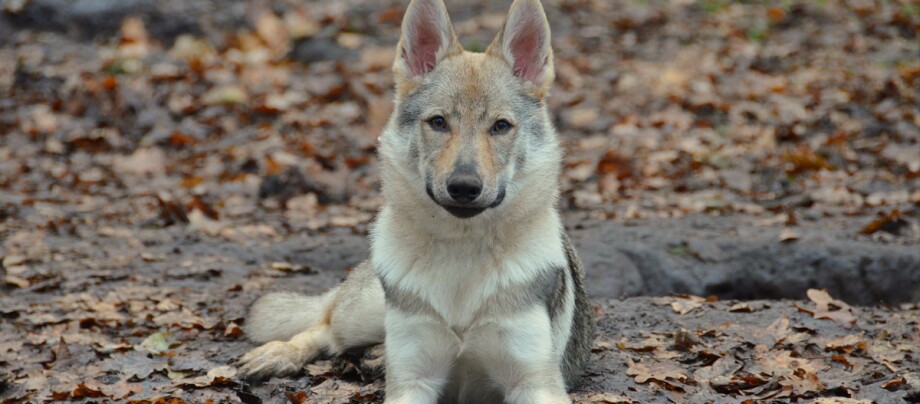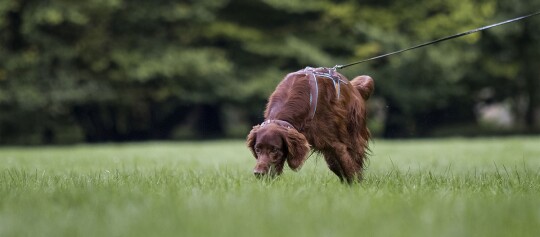Czechoslovakian Wolfdog – Shy but Fearless Companion with a Big Heart
07.10.2022 - Reading time: 3 minutes

The Czechoslovakian Wolfdog is a cross between the German Shepherd and the Carpathian wolf. It is mistrustful of strangers and can sometimes even be aggressive towards them. But it would go through fire for its owner. If it is trained in a consistent, respectful manner and is kept correctly, it will develop into a loyal and loving companion.
NewsletterCzechoslovakian Wolfdog
Breed | Czechoslovakian Wolfdog |
Origin | Czech Republic |
Classification | Guard dogs and herd dogs |
Size | from 26 kilograms (male), from 20 kilograms (female) |
Weight | robust and powerful |
Physique | small, oblique, amber coloured |
Eyes | small, oblique, amber coloured |
Ears | triangular erect ears |
Coat and colour | Yellow-grey to silver-grey thick fur, often with white patches |
Special features | Very shy, distrustful of strangers |
Nature | Loyal, intelligent, untiring, fearless |
Care | regular coat care |
Ancestors from the Carpathians
In the search for a fearless dog to protect their borders, Czechoslovakia began a very “special” experiment in 1955: the Carpathian wolf was crossed with the German Shepherd. This mix was to combine the best characteristics of the different animals with one another. The result was not a success as the dogs were too shy and too aggressive for service dogs. Nevertheless, some enthusiasts began to breed the unusual dogs.
In 1982, the Wolfhound was registered as a breed in Czechoslovakia; however, breeders had to wait until 1999 before the breed was officially recognised by the international umbrella federation the FCI (Fédération Cynologique Internationale).
Character of the Czechoslovakian Wolfhound
The Czechoslovakian Wolfhound is still very similar to its ancestor, the Carpathian wolf, even if the last cross with the wolf is now decades ago. It is seen as fearless, distrustful of strangers and prone to stress. This shy dog does not like loud noises, gatherings of people and hustle and bustle at all. It is also ill at ease in unfamiliar situations.
In contrast, the Wolfhound is devoted to its owner. When it is kept and occupied appropriately, it develops into a reliable companion who is eager to learn and regularly amazes with its intelligence.
Training and keeping of the Czechoslovakian Wolfhound
The Wolfhound needs very careful training and socialisation: If you wish to select this breed of dog, you should either have experience with dogs or acquire experience beforehand.
The ideal relationship between owner and Wolfhound is characterised by mutual respect. The animal is reluctant to adopt a position of subordination; instead, it sees its owner as a partner. In order to develop a trusting relationship to this strong-willed dog, you require a lot of patience, time and sensitivity. Assistance from a professional dog trainer can prove invaluable.
The Wolfhound is often very patient and loving towards children.. As with all dogs, however: never leave your children alone with the animal. This breed is only suitable as a family dog to a certain extent since households with young children in particular are loud and hectic.
When the Wolfhound is kept physically and mentally active, it is a well-balanced dog. It needs a lot of exercise and mental challenges. Lengthy walks and cycling tours are best for it. With dog sports like mantrailing or tracking its excellent nose can be put to good use. Ideally, it lives in a house with a large, fenced-in garden.
Its hunting instinct and its pack behaviour are highly pronounced. It does not always get on with dogs of the same breed – it should already be well socialised as a puppy in order to defuse encounters with other dogs.
Caring for the Czechoslovakian Wolfhound
You should regularly brush the dog’s thick fur and do so on a daily basis during moulting.

